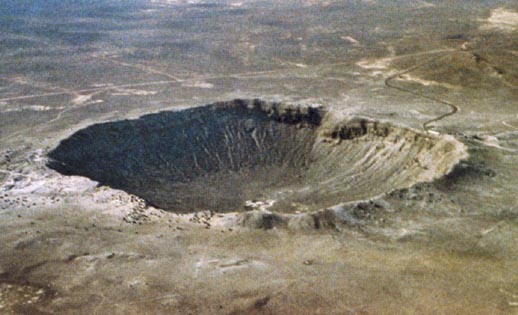Astronomy Picture of the Day
Discover the cosmos! Each day a different image or photograph of our fascinating universe is featured, along with a brief explanation written by a professional astronomer.
Posted on 12/30/2002 11:04:23 PM PST by petuniasevan
Discover the cosmos! Each day a different image or photograph of our fascinating universe is featured, along with a brief explanation written by a professional astronomer.
Explanation: Could an asteroid destroy civilization on Earth? Mountain-sized space rocks could potentially impact the Earth causing global effects, and perhaps even be mistaken for a nuclear blast of terrestrial origin. Such large impacts are rare but have happened before. Modern telescopes have therefore begun to scan the skies for signs of approaching celestial hazards. Over the past year, projects such as Spacewatch and Spaceguard have continually discovered previously unknown asteroids that indeed pass near the Earth. Such projects are still rather modest, however. In June, 100-meter asteroid 2002 MN was discovered only after it whizzed by the Earth, crossing even within the orbit of the Moon. This year brought much discussion in the astronomical community of expanding technology to discover most large Near Earth Objects and extend the time between discovery and impact for all potential astronomical hazards. Pictured above is an illustration of a busy planetary system, showing the view of a planet ringed with space debris from a recently formed crater of an orbiting moon.
If the asteroid had impacted at sea (most likely), the tsunami (tidal wave) would have devastated all its coastline. If the impact had happened on land, you can bet that jumpy governments would have thought it was the first nuke of WWIII. In any case, the disaster would be so great that all others would pale in comparison.
Do you realize that there are more people working in your neighborhood retail emporium than are watching the skies for Near Earth Objects right now? Oh, and that's the Northern Hemisphere only. Currently there is no dedicated Southern Hemisphere NEO program.
That's like only scraping the ice off half your car's windshield. You can see to drive, but what might be coming from the direction you can't see?
This is the kind of impact crater you get from an object only 100-150 feet in diameter:

Barringer Crater in Arizona is nearly a mile wide and 570 feet deep.


And.....


LOL !




Disclaimer: Opinions posted on Free Republic are those of the individual posters and do not necessarily represent the opinion of Free Republic or its management. All materials posted herein are protected by copyright law and the exemption for fair use of copyrighted works.